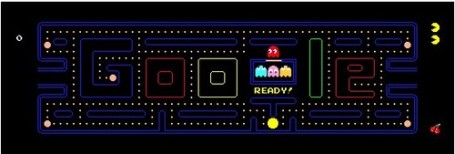Pal Mickey: Context-Aware Disney Technology
I was just recently introduced to Pal Mickey:
[Pal Mickey] is a ten inch (26.5 cm) Mickey Mouse, soft and easy for children to hold. Inside, it contains a microprocessor, a speaker, three AA batteries, three squeeze sensors (one in each hand and one in its belly), and an infrared receiver in its nose.
Pal Mickey was sold for use at the four theme parks at Walt Disney World Resort… It communicates invisibly with more than four hundred infrared transmitters around [the] parks. It will periodically giggle and vibrate to indicate that it has information to provide; when its belly or hand is squeezed, it will speak up with information about the immediate area, parade and showtime reminders, tips on what costumed walkaround characters may be nearby, and attractions with short queue times. It “remembers” where it has been so as to avoid repeating itself.
Pal Mickey also played games and interacted with kids (young and old) when not physically within the Disney parks. You can read more about Pal Mickey’s development in an interview with Disney Imagineering.
Pal Mickey is no longer produced or sold. Perhaps it was ahead of its time. Perhaps the experience Pal Mickey created was simply too limited as to be successful in relation both to the associated cost and to the prospect of carrying a doll around the parks all day. Whatever the case, this Disney toy concept got me thinking about the possibilities of context-aware toys and thinking of play experiences as an entirely new kind of media.
Amusements vs. Connections
Let’s suppose today’s interactive toys have plateaued in their abilities. Let me explain my broad meaning by drawing a comparison. Personal Computers around the early 90s hit a certain plateau of ability too. PCs began as number-crunching devices and evolved into productivity tools and gaming platforms, among other uses. However, in all cases, PCs were constrained by local data and local interactions. They were quite “inwardly” oriented and their continued evolution stagnated. Then ubiquitous network connectivity came on the scene, and the Internet (or more specifically the web) went thermonuclear. At that transition PCs evolved into connection machines and shifted to become “outwardly” focused. The experience of computing was fundamentally transformed.
Yes, there are Internet-connected toys and toys with responsive sensing technologies, but the form factor and the interactions more often than not simply don’t work well or aren’t particularly compelling. But the basic idea of connecting toys to the world around them is a really good one.
To greatly over generalize — toys have most often been amusement devices that direct attention toward themselves; the toy experience is limited to the toy itself. But what if instead of capturing a player’s focus, toys guided their player outwardly to connect with and re-imagine the surrounding world and relationships?
The New Media of Play Experiences
Toys like Teddy Ruxpin and Pal Mickey have dipped their plush little toy toes in the water I’m describing. Imagine these type of toys supercharged with wireless broadband, geolocation, and any number of context-aware sensors. Then forget all that techno mumbo jumbo and think in terms of play experiences. To echo my earlier comparison, imagine this toy on the other side of the transition from a mere amusement to a connector — a play guide, storyteller, something else entirely that transforms the experience of the surrounding world. Interactive toys have long offered games and stories but what’s truly possible when the games and stories are shaped by and react to the mood of the player(s); incorporate the physical location of play; build on schoolwork; and encourage the player to explore the history, colors, and culture of the immediate environment through play?
Now, of course, all this presupposes certain technological advances and cost reductions, but I’m confident we will reach that point of connectivity and affordability. For when we do I envision a new media model where, like books and movies, play experiences are crafted and then “published” through toys. Further, though it might seem I’m concentrating on children’s toys, I see no reason why this same model might not apply to adults. A huge appetite already exists for fiction of all sorts. Why couldn’t familiar fiction play out on the backdrop of your own home or neighborhood? Why couldn’t social media extend to social play and become a normal part of dinners and dates. Kids have play dates. Why not adults? Why couldn’t learning of all sorts incorporate guided play through specialized toys? I’m reminded to a degree here of the Young Lady’s Illustrated Primer from Stephenson’s Diamond Age.
Final Thoughts
My one concern in all of this is the inevitable corrupting of the play experiences for ulterior motives. No doubt marketers will “extend brands” using these envisioned toys in a cheaply manipulative way. Think of the horrors of happy meal toys and movie tie-ins that could result. Still, I hope good taste will prevail and that the benefits will far outweigh any such costs.
If you found this article interesting, you might also like Rituals as Creative Play for Adults + Playful Ritual Objects.
 Saturday, May 22, 2010 at 5:48PM
Saturday, May 22, 2010 at 5:48PM 

